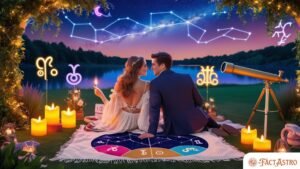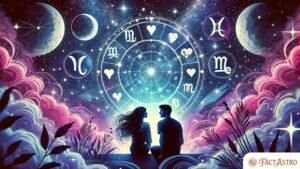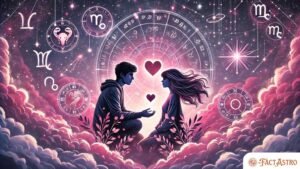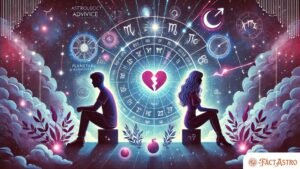Look here Astrology for Kids: Spark Curiosity About Stars and the Universe with fun and simple ways to teach children about planets, zodiac signs, and the magic of the night sky.
Astrology, the study of stars and planets and their influence on our lives, has captured human imagination for centuries. Introducing children to astrology not only nurtures their curiosity about the universe but also encourages self-awareness and creativity.
This article offers a fun and educational approach to teaching the next generation about the stars, blending science, imagination, and self-discovery.
Astrology for kids is a playful yet meaningful way to spark their interest in the cosmos. Through simple explanations and engaging activities, children can learn about zodiac signs, horoscopes, and the symbolic meanings of celestial bodies. Teaching astrology to kids require belief in predictions:
Table of Contents
Personality traits, and exploring the universe. This process can enhance their critical thinking, emotional intelligence, and sense of wonder. By introducing astrology as both an art and a science, we help kids embrace their unique traits and dream big under the endless sky.
Astrology for Kids: Teaching the Next Generation About the Stars
Astrology has been a source of fascination for people across the globe for thousands of years. The study of celestial bodies and their influence on our lives can spark curiosity, creativity, and self-reflection. Teaching astrology to kids introduces them to the wonders of the universe, offering them a fresh perspective on both the cosmos and their own unique personalities. By blending storytelling, education, and exploration, astrology for kids becomes a fun and engaging way to inspire young minds.
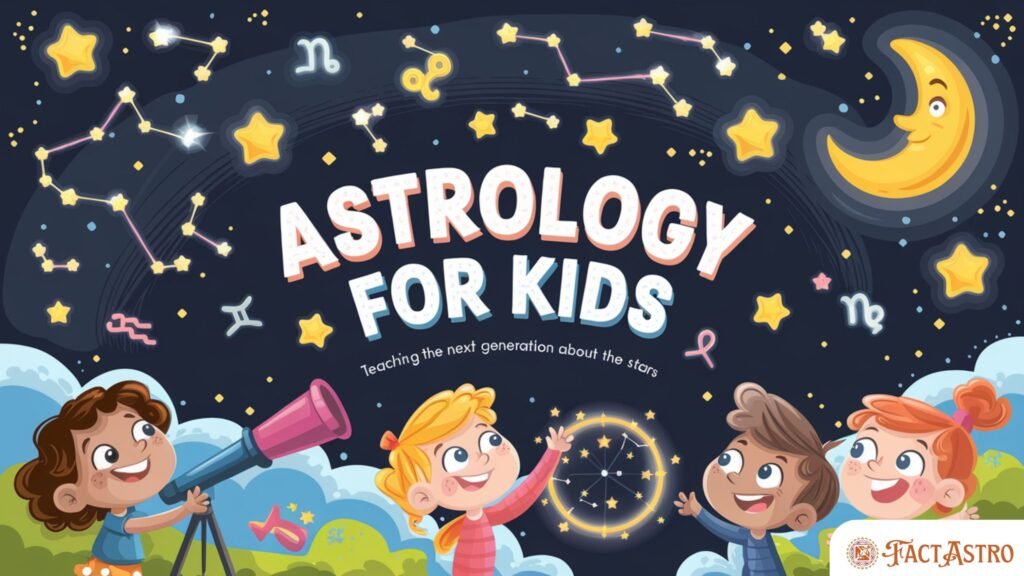
This article delves into the basics of astrology for children, exploring how to teach them about zodiac signs, celestial movements, and the meaning of the stars in an age-appropriate way. Let’s explore how we can nurture their sense of wonder and help them connect with the magic of the universe.
What Is Astrology?
At its core, astrology is the study of how the positions and movements of celestial bodies—such as the sun, moon, and planets—relate to events and personalities on Earth. While it’s not a science in the traditional sense, astrology can be seen as a symbolic language that connects us with the universe. It’s a system that helps us interpret traits, emotions, and patterns based on the positions of these celestial bodies at a specific moment in time, such as a person’s birth.
For kids, astrology can be introduced as a creative and exploratory subject that encourages them to think about their place in the universe. It also provides a framework for self-awareness and understanding the diversity of personalities around them.
Why Teach Astrology to Kids?
Teaching astrology to kids has several benefits that go beyond understanding horoscopes or zodiac signs. Here’s why it’s worth exploring:
- Encourages Curiosity About the Universe: Astrology provides a gateway for children to learn about the stars, planets, and constellations, sparking an interest in astronomy and the natural world.
- Builds Emotional Intelligence: Learning about personality traits and emotional tendencies associated with zodiac signs can help children understand themselves and others better, fostering empathy and self-awareness.
- Enhances Creativity: Astrology’s rich symbolism and storytelling aspects encourage kids to think imaginatively and explore their creative side.
- Teaches Diversity and Inclusion: By exploring the unique traits of each zodiac sign, children learn to appreciate different perspectives and celebrate individuality.
- Inspires a Sense of Wonder: The vastness of the universe and its mysteries can fill kids with awe, inspiring them to dream big and think beyond the confines of their immediate environment.
How to Introduce Astrology to Kids
Introducing astrology to children doesn’t have to be complex. The key is to keep it simple, fun, and age-appropriate. Here are some steps to get started:
1. Start with the Basics: Begin by explaining that astrology is about understanding the patterns and cycles of the stars and planets. Keep the explanation light and engaging. For example:
- “Astrology is like a giant map of the sky that helps us learn about ourselves and the world around us.”
- “Your zodiac sign is like your star personality, based on when you were born.”
2. Introduce Zodiac Signs: The 12 zodiac signs are a great starting point. Explain that each sign is linked to a specific time of year and has its own traits. You can use colorful charts or illustrations to make it visually appealing. Break down the signs into groups:
- Fire Signs (Aries, Leo, Sagittarius): Energetic, bold, and creative.
- Earth Signs (Taurus, Virgo, Capricorn): Practical, grounded, and nurturing.
- Air Signs (Gemini, Libra, Aquarius): Curious, social, and inventive.
- Water Signs (Cancer, Scorpio, Pisces): Emotional, intuitive, and imaginative.
Encourage kids to identify their own zodiac sign and explore the traits associated with it. For example, “You’re a Leo, which means you’re naturally creative and love to shine like the sun!”
3. Connect to Personalities: Once kids know their zodiac sign, they’ll love discovering how it reflects their personality. You can frame it as a fun activity:
- Ask them if they feel like the description matches who they are.
- Share stories about famous people or characters with the same sign.
- Encourage them to compare signs with friends or family to see how they differ.
4. Explore the Night Sky: Pair astrology lessons with real-world stargazing to connect kids to the physical universe. Use apps, telescopes, or even a simple star map to point out constellations associated with zodiac signs. For example:
- “Did you know that the Leo constellation looks like a lion in the sky?”
- “Let’s find the Big Dipper tonight; it’s close to some of the zodiac constellations.”
This adds a sense of realism and excitement to the mystical aspects of astrology.
5. Incorporate Art and Storytelling: Astrology is rich in mythology and stories. Share tales of the Greek or Roman gods linked to the zodiac signs, such as Aries the ram or Aquarius the water-bearer. Encourage kids to draw their zodiac sign or create their own star-based stories. This makes the subject come alive in their imagination.
Fun Astrology Activities for Kids
- Create a Zodiac Wheel: Help them design a colorful wheel that shows all 12 signs, their dates, and traits.
- Astrology Journals: Encourage kids to keep a journal of their thoughts and emotions during different moon phases or seasons.
- DIY Star Charts: Have them make their own star maps using glow-in-the-dark stickers or drawings.
- Personality Matching Game: Create flashcards with zodiac traits and let kids match them to the right sign.
- Astrology Storytime: Make up bedtime stories about the constellations and zodiac myths.
Addressing Skepticism and Balance
It’s important to teach astrology to kids in a balanced way. Emphasize that astrology is a tool for self-discovery and creativity, not a strict set of rules or predictions. For example:
- Explain that astrology is fun and symbolic, not something that can tell the future.
- Encourage critical thinking by letting kids question and explore different viewpoints.
- Pair astrology lessons with basic astronomy to ground their understanding in science.
This balanced approach ensures kids appreciate astrology for its cultural and imaginative value without confusing it with factual science.
The Broader Benefits of Astrology for Kids
Beyond the immediate fun of learning about zodiac signs, astrology offers long-term benefits for children. It can:
- Foster Self-Confidence: Understanding their unique traits helps kids feel special and appreciated for who they are.
- Promote Emotional Growth: Learning about their emotions and those of others builds empathy and resilience.
- Encourage a Lifelong Love of Learning: Exploring the stars and planets often leads to deeper interest in astronomy, mythology, and art.
Conclusion
Teaching astrology to kids is a delightful way to nurture their curiosity about the stars and their own inner worlds. By blending education, creativity, and exploration, astrology becomes a meaningful tool for self-discovery and connection. Whether through storytelling, zodiac-themed activities, or stargazing, children can find inspiration and wonder in the vast cosmos above. In doing so, they learn to embrace their individuality, celebrate differences, and dream beyond the stars.



